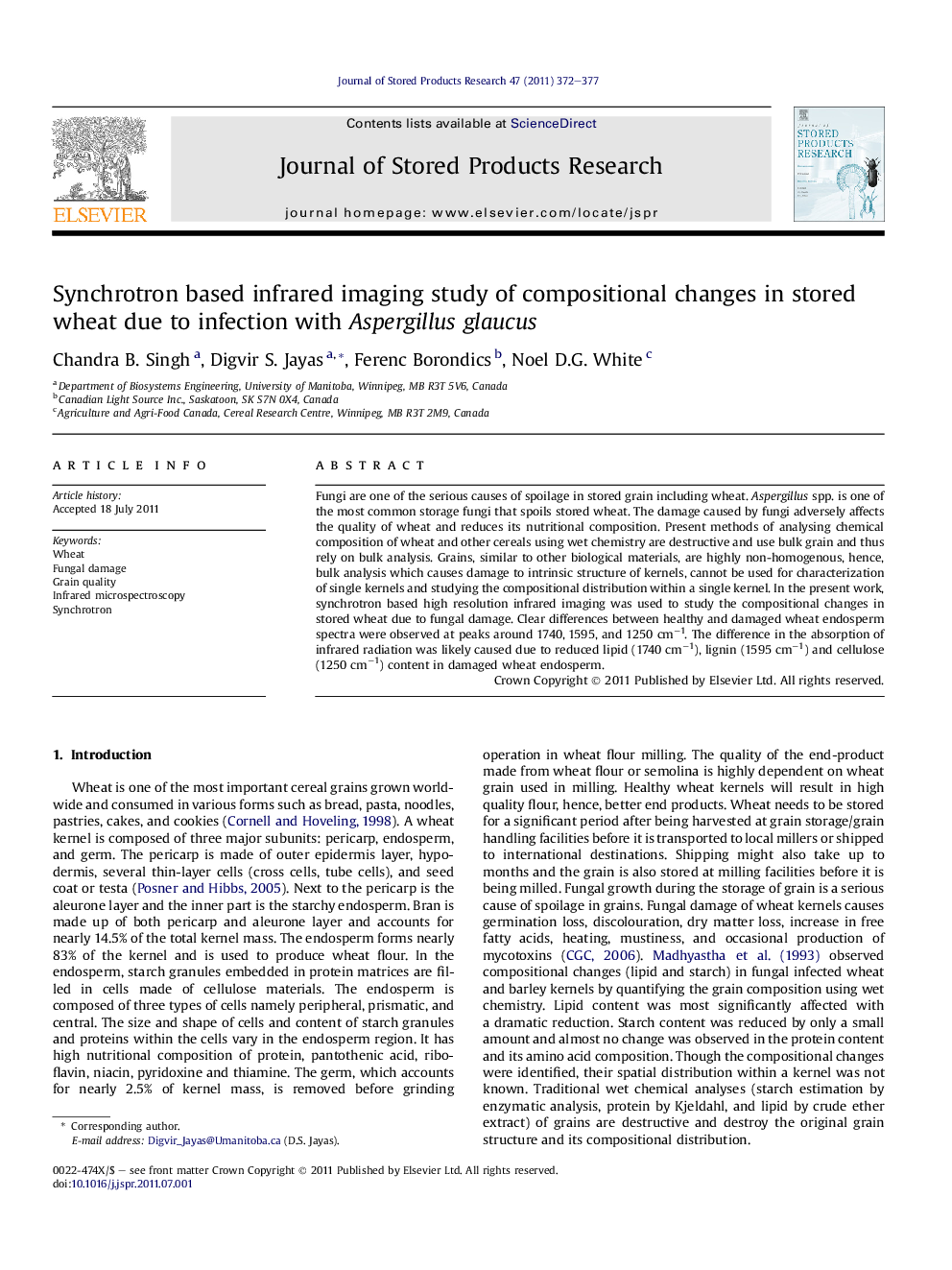| Article ID | Journal | Published Year | Pages | File Type |
|---|---|---|---|---|
| 4517236 | Journal of Stored Products Research | 2011 | 6 Pages |
Fungi are one of the serious causes of spoilage in stored grain including wheat. Aspergillus spp. is one of the most common storage fungi that spoils stored wheat. The damage caused by fungi adversely affects the quality of wheat and reduces its nutritional composition. Present methods of analysing chemical composition of wheat and other cereals using wet chemistry are destructive and use bulk grain and thus rely on bulk analysis. Grains, similar to other biological materials, are highly non-homogenous, hence, bulk analysis which causes damage to intrinsic structure of kernels, cannot be used for characterization of single kernels and studying the compositional distribution within a single kernel. In the present work, synchrotron based high resolution infrared imaging was used to study the compositional changes in stored wheat due to fungal damage. Clear differences between healthy and damaged wheat endosperm spectra were observed at peaks around 1740, 1595, and 1250 cm−1. The difference in the absorption of infrared radiation was likely caused due to reduced lipid (1740 cm−1), lignin (1595 cm−1) and cellulose (1250 cm−1) content in damaged wheat endosperm.
► Composition of healthy and Aspergillus glaucus group infected wheat kernels were different. ► Absorbance spectra around 1740, 1595, and 1250 cm−1 were important. ► Fungal infection of wheat likely caused a decrease in lipid, lignin, and cellulose contents.
